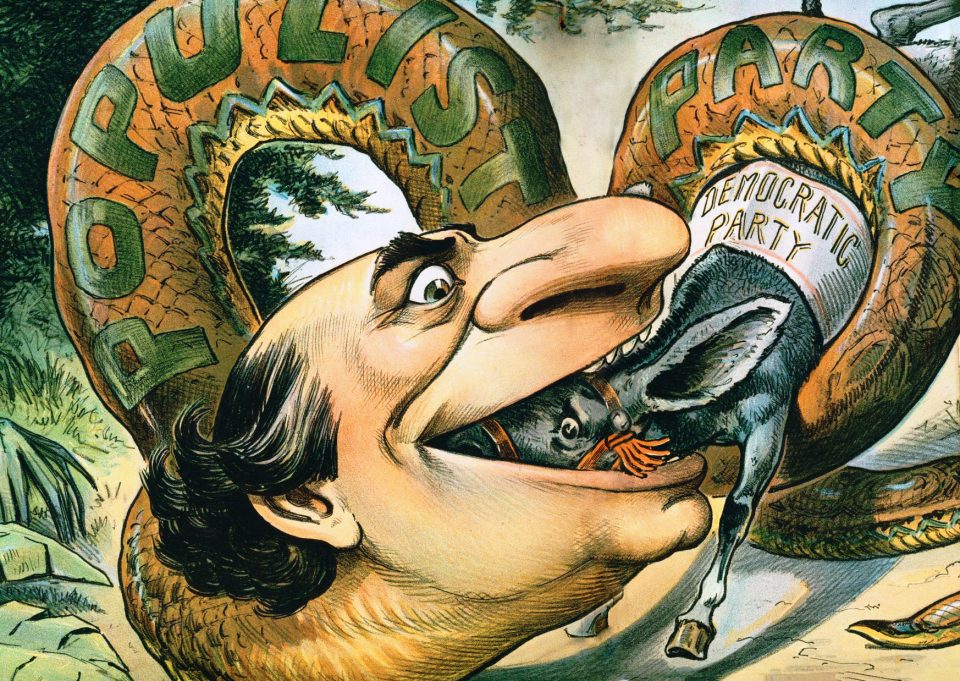A Populist Wind is Blowing on Italy
On March 2018, during the last general election, Italy elected a populist government. With the law professor Giuseppe Conte as the head of the coalition cabinet, the far-right League (1989) led by Matteo Salvini and the post-ideological Five Star Movement (2005) led by Luigi Di Maio are running the country. The two parties competed separately in Italy’s general election. The Five Star Movement came out first with 33 percent of the vote and the League got 17 percent. In the South of the country and in the islands, Italians mostly voted for the Five Star Movement which proposed a basic income of more than 700 euros for each unemployed person. In the rest of the country, Italians voted for the right coalition and the Democratic Party (left side).
At first, the two main winners seemed very different: while the League has its roots in a secessionist movement, pursuing an anti-migrant agenda, the Five Star Movement, founded by the Italian comedian Beppe Grillo, emphasized about direct democracy, anti-corruption policies, and a green economy.
On closer inspection, however, there are many similarities. Both parties expressed the will of leaving the European Union (even though they both changed their mind later on); they support anti-vaccine theories; they have links with the far right and pro-Russia propaganda sources in the Western countries (Marine Le Pen, Vladimir Putin, Viktor Orban, Donald Trump); they have an anti-immigrant plan; they legitimize a new language through social media.
In fact, Mr. Salvini and Mr. Di Maio often use Facebook to spread their contents. Introducing new words such as “caste” and “major powers” in the political debate, they highlight the existence of some conspiracy theories against them. They also use the expressions “radical chic” or “bleeding heart” (buonista) to refer to those people who are against their immigration policies and their language.
Both parties are supported by a fake news system that works as a propaganda machine. “This machine includes not just the party’s own blogs and social accounts, which have millions of followers, but also a collection of profitable sites that describe themselves as ‘independent news’ outlets but are actually controlled by the party leadership. (…) One of them, TzeTze, has 1.2 million followers on Facebook. Under lurid, all-capped headline phrases such as ‘THE TRUTH THEY ARE TRYING TO HIDE FROM US’, the party’s blogs, TzeTze, and other sites in the network have crossposted scores of fake stories. These include claims that the US is secretly funding traffickers bringing migrants from North Africa to Italy, and that Barack Obama wants to topple the Syrian regime to create instability across the region so China cannot get access to its oil” (Buzzfeed).
In 2017, Reporters Without Borders, an international NGO that analyzes the freedom of information and press in the world, highlighted that in Italy “the level of violence against reporters (including verbal and physical intimidation and threats) is alarming, especially as politicians such as Beppe Grillo of the Five Star Movement do not hesitate to publicly out the journalists they dislike.” In fact, there have always been tensions between journalists and the organization. Back in 2005, activists of the Five Star Movement were not allowed to speak with journalists; recently, some party members declared that journalists are whores and jackals (sciacalli).
What mentioned so far seems part of a specific strategy that includes an aggressive language, the trivialization of complex issues (such as immigration), and the common will to find enemies. In fact, both parties often use enemies to blame: journalists, immigrants, the European Union, the Democratic Party, judges, etc.
The current coalition cabinet has broad political support, no matter what politicians say. How long will this political consensus stand? And what happens when the political honeymoon ends? It is hard to tell but so far nothing seems to break the deal. Even though intellectuals and journalists highlight constantly the inconsistencies of the current government, Italians seem to believe that the coalition will be able to solve the financial issues. However, so far no laws have been proposed to mitigate corruption, social inequalities, and other main problems.
In the digital era, the far-right League and the post-ideological Five Star Movement have found a way to succeed: spreading contents and selfies as weapons of mass distraction.
By Alessandra Bonanomi, reporter for The AsiaN






















































